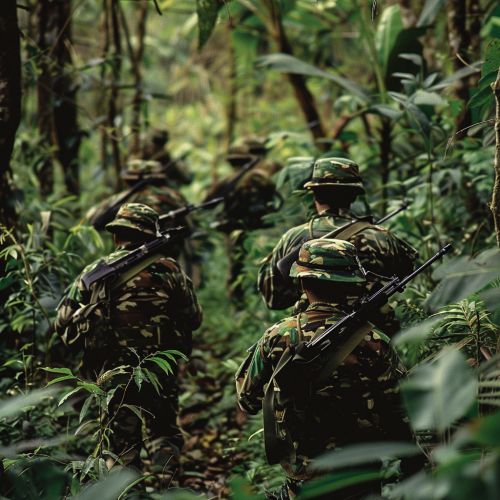Unconventional warfare
Introduction
Unconventional warfare (UW) is a form of warfare that diverges from the traditional methods of open, direct combat. It involves the use of irregular military tactics, including guerrilla warfare, subversion, sabotage, intelligence activities, and psychological operations. These tactics are often employed by non-state actors or smaller state actors against larger, more conventionally powerful opponents.


History
The concept of unconventional warfare has been around for centuries, with examples found throughout history. From the American Revolution to the Vietnam War, unconventional warfare tactics have been used to great effect against larger, more conventionally powerful forces.
Types of Unconventional Warfare
There are several types of unconventional warfare, each with its own unique set of tactics and strategies.
Guerrilla Warfare
Guerrilla warfare is a form of irregular warfare in which small groups of combatants use military tactics, such as ambushes, sabotage, raids, and the element of surprise, to fight a larger and less-mobile traditional military.
Subversion
Subversion involves attempts to undermine the power and authority of an established system or institution. This can be done through propaganda, political intrigue, or physical destruction.
Sabotage
Sabotage is the act of destroying or damaging property or equipment to hinder an enemy's operations or capabilities. This can include anything from disabling vehicles to disrupting communication networks.
Intelligence Activities
Intelligence gathering in unconventional warfare involves collecting information about an enemy's capabilities, intentions, and activities. This can be done through a variety of means, including espionage, surveillance, and reconnaissance.
Psychological Operations
Psychological operations are used to influence the attitudes and behaviors of enemy forces, neutral populations, and friendly forces. This can be done through propaganda, misinformation, and other psychological techniques.
Strategies and Tactics
The strategies and tactics used in unconventional warfare are often designed to exploit the weaknesses of a larger, more conventionally powerful enemy. These can include the use of surprise, deception, and mobility to achieve tactical advantages.
Surprise
Surprise is a key element in unconventional warfare. By striking unexpectedly, small forces can inflict significant damage on larger forces and then disappear before a counterattack can be organized.
Deception
Deception is another important tactic in unconventional warfare. This can involve anything from feigning weakness to lure an enemy into a trap, to spreading misinformation to sow confusion and doubt.
Mobility
Mobility is crucial in unconventional warfare. Small, agile forces can move quickly and unpredictably, making it difficult for larger forces to pin them down or predict their movements.
Implications and Impact
Unconventional warfare has significant implications for both military strategy and international relations. It can level the playing field between asymmetric forces, allowing smaller, less powerful actors to effectively challenge larger, more powerful ones. This can have profound impacts on the outcome of conflicts and the balance of power in the international system.
